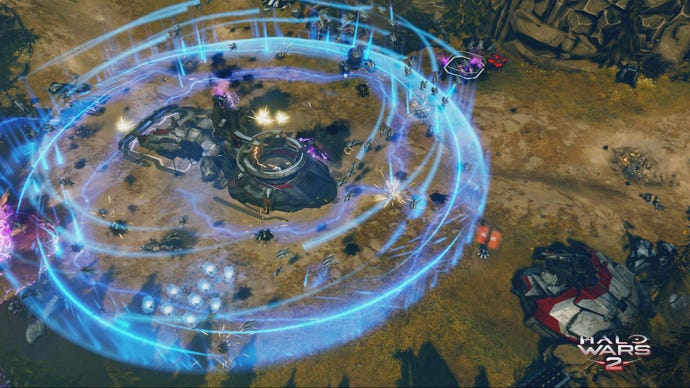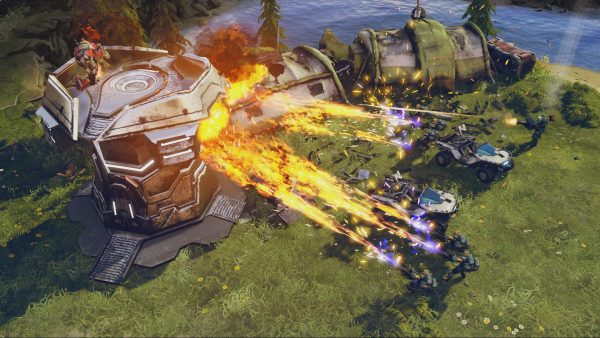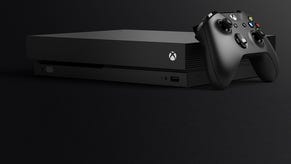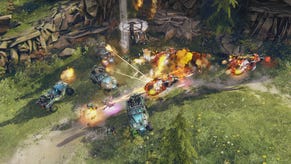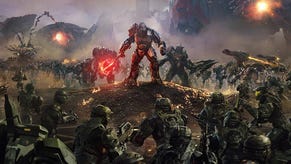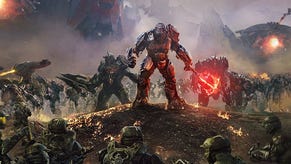Halo Wars 2 PC review: the spirit of Command & Conquer trapped in a dilapidated husk
Loving or hating Halo Wars 2 largely depends on what you look for in an RTS.
"Being designed for a controller has evidently been to the detriment of the overall experience."
Before Halo Wars 2 was announced, I never expected I’d be talking about a triple-A RTS that isn't Dawn of War or Company of Heroes anytime soon. The RTS genre is more or less dead, and has been for a while. It gave way to off-shoots like the many MOBAs and other tower-defence variants, but the good ol’ game where you build your base, round up your troops and make a mess of your enemies is all but gone.
Games like Dawn of War 3 are trying new things; a mix of hero battles typical of MOBAs and a traditional RTS structure. Whatever approach new RTS games take, nothing has quite been able to replicate the Command & Conquer games. There’s either too many resources, distinctly asymmetrical factions, or some weird gimmick added in to "push the genre forward". Although I enjoy them, nothing comes close to the brand of fun found in Westwood’s classic games.
Halo Wars 2 does come close, but after finishing the campaign and playing a few Skirmish and Blitz matches, I am hesitant to call it a spiritual successor to Command & Conquer, even if it plays a lot like it. Being designed for a controller has evidently been to the detriment of the overall experience.
There’s a lot to like in Halo Wars 2, though. It's a game built on a philosophy of providing accessible, mostly autonomous RTS battles. It’s also a game that offers a campaign with a surprisingly decent story and excellent cut-scenes. It even tries to introduce new ideas with Blitz mode.
Unfortunately, every one of those aspects eventually devolves into a lesser version of itself, leaving you to wonder if the initial lustre is what kept you going in the first place. The game’s campaign starts off with the introduction of a formidable villain, and sets up a struggle with poor odds. Characters are one-dimensional for the most part, but that’s because they’re mostly here to tell you stuff over the radio.
The first few missions introduce new mechanics, units, and create scenarios for you to fight your way out of at a steady pace. But then it just stops doing that, and starts going through the motions, undermining the opening salvo of good missions you were greeted with. Having recently played the remaster of the original game on PC, I was surprised to find a returning, near identical design for a particular mission.
That mission was to get long-range artillery units into firing positions, fighting enemies along the way before eventually securing the points and protecting them from enemy retaliation. Though the mission wasn’t particularly difficult or interesting, it wasn’t impressive either. And this is the sentiment that underlines the entire experience, not just in terms of what the game lets you do, but in the way some of its best moments are offered up.
The PC version is a great example of this misdirection. Though not quite the nightmare I feared it would be, it was lacking to a sometimes frustrating degree. The menus and UI are identical across PC and Xbox to the point of hampering mouse and keyboard play.
Halo Wars 2’s menus are an unorganised mess, among the worst I’ve ever seen. The key bindings menu in particular is a case study of how not to make a menu for anything ever. Made of some 15 pages, and using up only 50 percent of screen real estate like there's a law against utilising the full available space, this menu’s existence in its current state is itself an achievement.
I didn’t know how I could remove a key binding to remap it to another function because the game doesn't follow the universal ‘hold escape or backspace to remove bindings' rule, and it won't bother telling you how to do it either. I later found out how to do this by accident, but after I had nearly finished the game.
Control issues would not have been much of a hassle had the game itself offered other basic RTS staples. There’s no concept of an attack move, or halt. Your units are always attacking, and you never know if they’re going to chase their targets forever or just drive them away.
The only way the game knows how to talk to you is through radial menus. They’re inefficient, and a waste of space a lot of the time, but more importantly, a hassle on PC. Said menus also mean you can’t queue up units remotely. You have to be at your base, clicking the particular building you want and training units there.
It’s perplexing how Creative Assembly, an expert developer of much more complex PC-only strategy games, somehow could not come up with a PC-specific UI. Anything else would’ve done it really, since it’s hard for me to imagine Creative Assembly staff playing the game with this UI on a PC and thinking it was fine.
Though in fairness, that’s exactly what it is: it’s fine. It didn’t stop me from playing, but I dreaded its shortcomings every time I was reminded of them, and that was often.
It’s a shame, because removed from these problems, Halo Wars 2’s core gameplay loop is really fun. It’s a game that encourages scouting and taking action over everything else, a C&C principle. Unit roles are easy to understand, and the game even spills out the hard counters for you in the tutorial. The focus is on your ability to create a sizeable force and win skirmishes until you’re strong enough to take out an entire base.
It looks amazing, with beautifully-designed environments and animations that look great on the smallest and the largest units alike. Even building construction animations, something I usually analyse in these games, are very good, especially considering all buildings get air dropped. The intricate ways units navigate around each other and what they do while idling are all well thought-out.
It sounds good, too, and much like the mainline Halo games, you can easily tell the units apart by the sound of their weapons and the type of chatter they get into. Projectile weapons are crisp-sounding and energy weapons deliver a lot of oomph and thump.
Being very familiar with Halo units and vehicles, I often felt like a kid playing with his action figures on the floor. Only the toys here are high-polygon, and brimming with life. The zoom and follow cameras can seriously produce a lot of amazing moments, even when you’re on the receiving end of a bombardment.
"Whether or not you're going to have fun with Halo Wars 2 relies heavily on your tolerance levels for UI issues, and a core loop that's not very advanced. If you’re looking for a StarCraft clone with Halo units, this is not it."
Even Blitz, at its most basic level, is a mode designed to get people to like RTS games. It strips down all the base building and resource gathering parts of the genre for - quite literally – an instant action approach. Unfortunately, like I had suspected after playing the beta, the microtransactions side of it will end up ruining it.
You can spend $50 on day one and go in with a considerably higher-level, more powerful deck than what most other players would have starting out. And although matchmaking could theoretically account for this, and you obviously still need to play your cards right, it’s still an advantage. As for matchmaking, I don’t think the game will have anywhere near enough players – at least on PC – to support this split.
Sure, you earn card packs for free at a steady rate, and you can just ignore competitive Blitz and only play the Firefight variant with a friend. But why compromise the mode with a system like that in the first place? Halo Wars 2 is already fighting an uphill battle on both the platforms it’s on, wouldn’t it make more sense to appear player-friendly now to win the audience over rather than cut and run as early as possible?
Ultimately, whether or not you're going to have fun with Halo Wars 2 relies heavily on your tolerance levels for UI issues, and a core loop that's not very advanced. If you’re looking for a StarCraft clone with Halo units, this is not it. I was actively looking for the exact opposite, and that’s what I found. After more or less getting used to its bizarre quirks, I found a casual RTS that lets me build big armies and crush opponents that looks and sounds like it was made in 2017.
